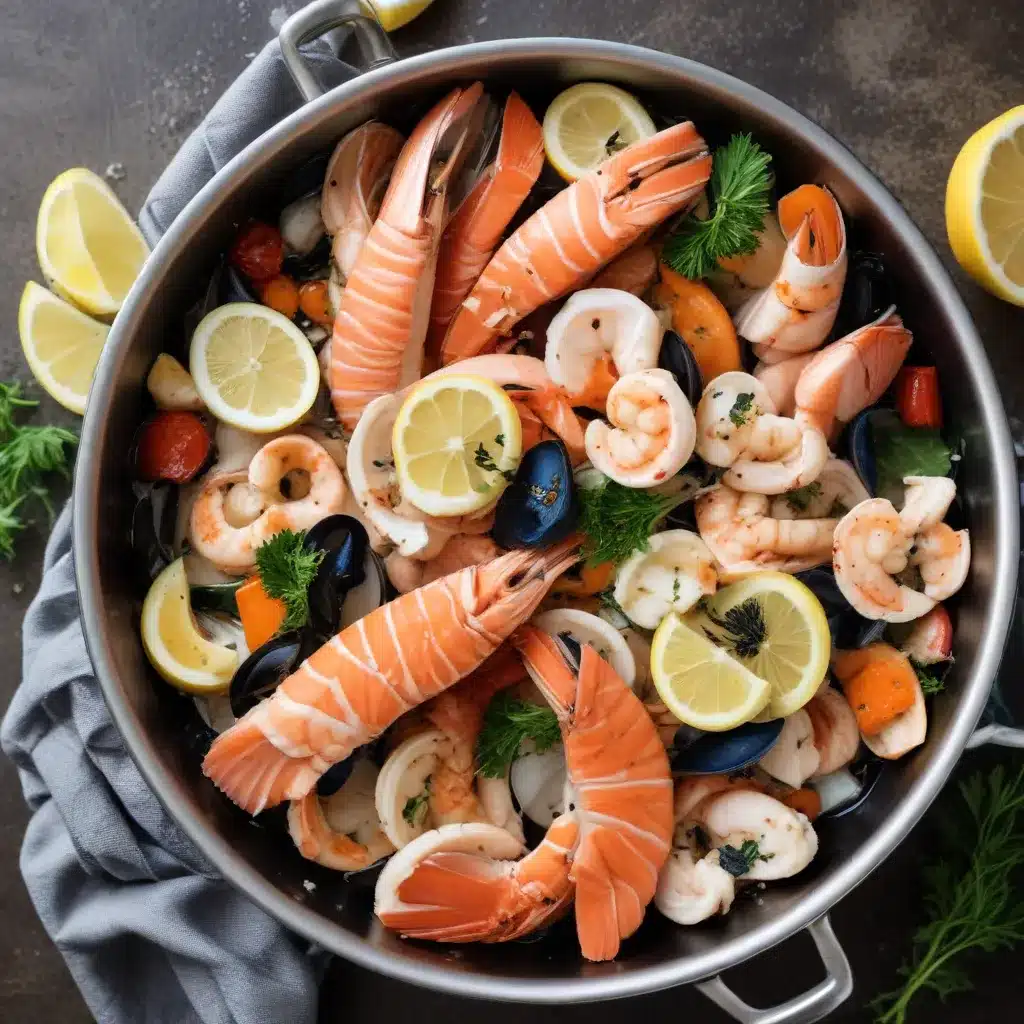
As a seafood dining expert writing for Fish Tales Cafe, I’m thrilled to share my insights on the art of cooking cod and other marine delicacies. Seafood offers unparalleled nutritional benefits, vibrant global flavors, and endless culinary possibilities. In this comprehensive guide, we’ll explore the nuances of seafood preparation, delve into the health advantages, and uncover sustainable sourcing practices to elevate your seafood dining experience.
Seafood Culinary Techniques
Seafood Preparation Methods
Proper handling and preparation are essential for capturing the inherent flavors of seafood. When defrosting frozen fish, it’s best to let it thaw slowly in the refrigerator overnight on a paper towel. For a quicker method, place the fish in a water-tight bag and submerge it in cold water for 15-20 minutes. Regarding cooking times, the “10-minute rule” is a reliable guideline: measure the fish at its thickest point and cook it on medium heat for 10 minutes per inch, turning it over halfway through.
Determining doneness for shellfish is equally important. Cooked shrimp should have a firm, opaque texture, while scallops should develop a golden-brown sear on the exterior while remaining tender within. Whole fish may require a lower cooking temperature and extended time to ensure the interior cooks evenly without drying out.
Seafood Cooking Approaches
Seafood’s delicate nature requires tailored cooking methods to prevent overcooking and maintain its signature moistness and texture. For flaky fish like sole or perch, quick sautéing or pan-searing work well, while heartier varieties like salmon can withstand grilling or baking. Shrimp and scallops excel with stir-frying or broiling, where their inherent sweetness can shine.
Brining seafood by soaking it in a saltwater solution can enhance moisture retention, while allowing it to rest after cooking helps the residual heat distribute evenly. Marinating in acidic ingredients like citrus juice or vinegar can also tenderize the flesh and impart delightful tanginess.
Seafood Flavor Profiles
Seafood’s inherent umami-rich profile pairs seamlessly with a wide array of complementary flavors. Aromatic herbs like parsley, cilantro, and dill; bright citrus notes; and earthy spices can all elevate the natural essence of the seafood. Crafting a well-conceived sauce or broth, such as a light lemon butter or a fragrant seafood fumet, can further accentuate the seafood’s delicate nuances.
Experimenting with unexpected ingredient combinations, such as pairing shrimp with avocado or scallops with a mango salsa, can create truly memorable seafood dishes that delight the palate.
Nutritional Benefits of Seafood
Macronutrient Composition
Seafood is a nutrient-dense protein source, providing a balance of macronutrients that support overall health. Cod, for example, is low in fat yet high in lean protein, making it an ideal choice for those seeking a filling, low-calorie meal. Other seafood varieties, such as salmon and tuna, offer heart-healthy omega-3 fatty acids that promote cardiovascular well-being.
Micronutrient Density
Beyond its protein content, seafood is teeming with essential micronutrients that are crucial for optimal bodily function. Cod is an excellent source of vitamins B12 and B6, which support red blood cell formation and neurological health. Shellfish, like mussels and oysters, are rich in zinc, copper, and selenium, minerals that bolster the immune system and protect against oxidative stress.
Disease Prevention Properties
Incorporating seafood into a balanced diet can also confer significant disease prevention benefits. The anti-inflammatory properties of omega-3s have been linked to a reduced risk of heart disease, stroke, and certain types of cancer. Furthermore, the bioactive compounds found in seafood, such as the antioxidants in salmon, may help stave off cognitive decline and support healthy aging.
Sustainable Seafood Sourcing
Responsible Fishing Practices
As seafood enthusiasts, it’s crucial to consider the environmental impact of our culinary choices. Responsible fishing practices, such as those employed by certified sustainable fisheries, help preserve fragile marine ecosystems and ensure the long-term availability of seafood. By prioritizing sustainably sourced seafood, we can enjoy the bounty of the oceans while safeguarding their delicate balance.
Environmental Considerations
When selecting seafood, it’s also important to consider the broader environmental impact, including factors like carbon footprint, bycatch rates, and habitat preservation. Opting for locally caught or regionally sourced seafood can minimize the carbon emissions associated with long-distance transportation, while supporting regional fishing communities.
Seafood Certification Programs
To guide your seafood purchasing decisions, familiarize yourself with reliable certification programs, such as the Marine Stewardship Council (MSC) and the Aquaculture Stewardship Council (ASC). These organizations rigorously assess fisheries and aquaculture operations to ensure they meet stringent sustainability criteria, empowering consumers to make informed and eco-conscious choices.
Seafood Meal Planning
Recipe Development
Crafting delectable seafood dishes extends beyond the cooking process; it involves thoughtful recipe development and ingredient pairing. Whether you’re preparing a simple weeknight cod fillet or an elaborate seafood bouillabaisse, understanding the interplay of flavors and textures can elevate your culinary creations.
Ingredient Pairings
Complementing the natural essence of seafood with harmonious ingredients is key. Bright citrus notes, aromatic herbs, and even unexpected elements like tropical fruits can all enhance the overall dining experience. Exploring diverse global culinary traditions, such as the use of miso or sambal in Asian-inspired seafood dishes, can also open up a world of possibilities.
Dietary Accommodations
For those adhering to specialized diets, seafood can be a versatile and gluten-free option. By thoughtfully constructing seafood-centric recipes that cater to various dietary needs, you can ensure that everyone at the table can enjoy the bounty of the seas. Experiment with grain-based sides, vegetable-forward accompaniments, and creative sauces to make your seafood dishes accessible and satisfying for all.
Whether you’re a seasoned seafood aficionado or just beginning to explore the culinary wonders of the ocean, mastering the art of cooking seafood can elevate your dining experiences and unlock a world of nutritional benefits. By embracing sustainable sourcing practices, experimenting with diverse flavor profiles, and understanding the unique properties of various seafood varieties, you’ll be well on your way to creating exceptional seafood dishes that nourish both your body and your palate.
To explore more seafood inspiration and cooking insights, visit Fish Tales Cafe – your premier destination for seafood enthusiasts.

